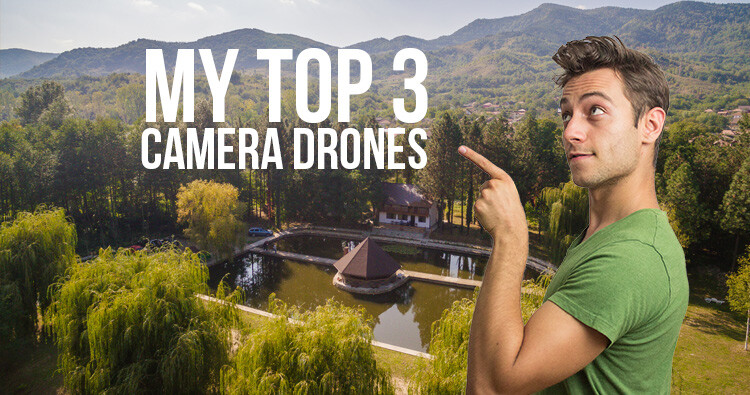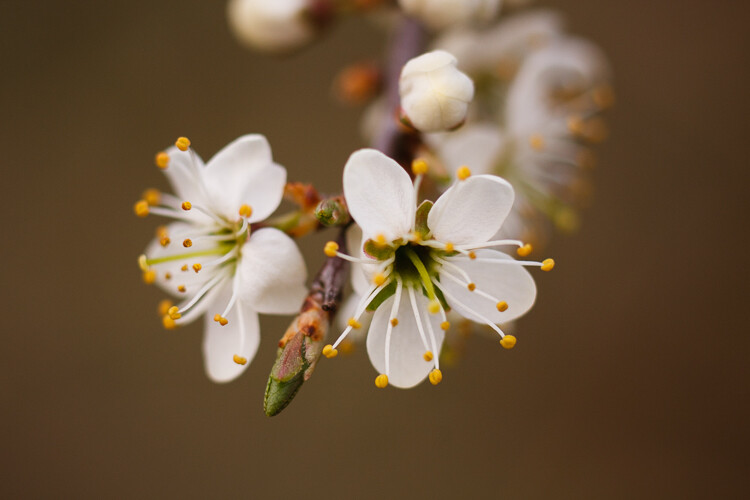In this article, I will give you some tips on how to choose the right or best ISO for landscape photography.
The challenge as a beginner
Choosing the ideal settings in different scenarios is quite challenging as a photography beginner. We’ve all been there and I certainly know your frustration when your images don’t look as good as you want.
There’s so much to think about including; the composition, the perspective, the camera gear, do you need filters? And what about the shutter speed, aperture, and ISO? Don’t worry, though. It takes some trial and error but soon enough it will be a piece of cake!

Since my camera was mounted on a tripod I could use a low ISO of 80 for this image.
I hope to make one of these questions a little clearer through this article, though. Choosing the ideal ISO is crucial for the image quality, and it has a direct impact on both the shutter speed and aperture.
Always use the lowest possible ISO
I won’t go too much into detail regarding how the ISO works in this article, but to simplify, the ISO expresses your camera’s sensitivity to light. The higher the ISO number, the more sensitive it is to light, while a lower ISO makes the camera less sensitive to light.
Please note: This is a simplification for beginners. It is actually much more complex than this but you don’t need to understand all the science behind the scenes to use ISO correctly.
While a higher ISO is good when aiming for a quick shutter speed, it also introduces a significant amount of grain or digital noise into the image. That’s something you want to avoid, and it’s the reason that you’ll often hear that you should always use ISO100.

To achieve the longest possible exposure I could use an ISO of 64 here.
Now, I agree that you should aim to use ISO100 for most stationary landscapes, you shouldn’t make the mistake of only using that setting. It took me several years before I managed to accept that there’s not only one correct ISO in landscape photography. In fact, I was pretty much an ISO100-nazi, and except for night photography, I stuck to it.
In later years I’ve learned that this isn’t necessarily the best practice.
First of all, you aren’t always able to use ISO 100. Here are a few scenarios where you might need to bump up the ISO:
- Photographing handheld.
- When trying to freeze moving subjects.
- When photographing at night.

ISO 640 was the lowest ISO I could use here in order to achieve a quick enough shutter speed to get a sharp handheld image.
These are just some of the scenarios where ISO 100 might not be possible. However, there are other, and less talked about, times where you need to increase the ISO as well:
- When adjusting the shutter speed for capturing the perfect motion/flow in water.
- If you need to freeze elements moving in the wind (such as bushes, branches etc.).
- When you’re using a telephoto lens handheld.
In other words, you should always aim to use the lowest ISO possible but that doesn’t always mean ISO 100 (even though that’s the “ideal” ISO quality-wise).
Adjusting the ISO at night
I briefly mentioned that ISO 100 is not ideal for night photography. Let’s look a little closer at that and find the best option. Remember that a higher ISO is more sensitive to light. In other words, that means you need less time (a shorter exposure) to achieve a correct exposure when it’s increased.
Now, at night there’s not a lot of light which means that you need more time to capture a well-exposed image. However, just setting the shutter speed to 30-seconds and leaving the ISO at 100, will still result in an underexposed image.

I had to increase the ISO to 4000 to get a well-exposed shot of this night scene.
Instead, you need to sacrifice some image-quality and increase the ISO. Exactly what ISO you need depends on the moon phase and overall brightness of your scene (for example, being close to city lights or other light sources will have an impact on your choice).
The first steps in my night photography workflow are to set the Aperture and Shutter Speed I’m going to use. Next, I use my base ISO for night photography, 1600.
However, just as with ISO 100, it’s not the only one you should use. ISO 1600 works as a starting point and after taking a test shot I’ll often make small adjustments. Most of the time you’ll use an ISO between 1200 and 3200 for night photography (though a full-moon or Aurora session might allow for an ISO as low as 800).
Adjusting the Aperture or ISO for a Quicker Shutter Speed
The most difficult part of manually adjusting settings is to learn what adjustments you need to make in certain situations. Should you adjust the ISO, Aperture, or Shutter Speed? I remember this being one of my biggest frustrations when first making the switch to Manual Mode.

ISO 100 – f/10 – 0.4 seconds.
While leading photography workshops I often tell the participants to adjust the settings as they normally would before I help them. I often notice that many are photographing with an aperture of f/22 and ISO 100. However, when they need a faster shutter speed, their first instinct is to increase the ISO.
That’s when I ask the question; “Do you really need an aperture of f/22? Will an aperture of f/16, f/11 or f/8 give you similar results? If so, then leave the ISO alone.
Remember, always use the lowest ISO possible. In this scenario, the image will benefit from using a wider aperture and maintaining a low ISO.

Let’s Summarize
I hope that I haven’t made you even more confused than what you were before. Understanding the ISO and choosing the correct one is a little tricky, as there isn’t always one correct choice. However, what I hope you take away from this article is that you should aim to use the lowest ISO possible in each given scenario.
For regular daytime photography, I typically use an ISO between 64 and 400 – the latter is when I’m using a telephoto lens handheld, which requires a quicker shutter speed to keep sharp. For night photography, I typically use an ISO between 1200 and 3200.

I used ISO 400 to capture this sharp handheld shot with my 200mm.
Most DSLR cameras are able to take relatively noise-free images at ISO 400 but I recommend spending some time getting used to your camera and finding its limit.
So, as the final word, there isn’t one single correct ISO for each and every scenario but aim to use the lowest possible.
Learning how to choose the ideal settings takes some trial and error to learn. In my eBook, A Comprehensive Introduction to Landscape Photography, I teach the techniques you need to know in order to capture beautiful images, and how you easily can master them.
The post How to Choose the Right ISO for Landscape Photography appeared first on Digital Photography School.




































































You must be logged in to post a comment.